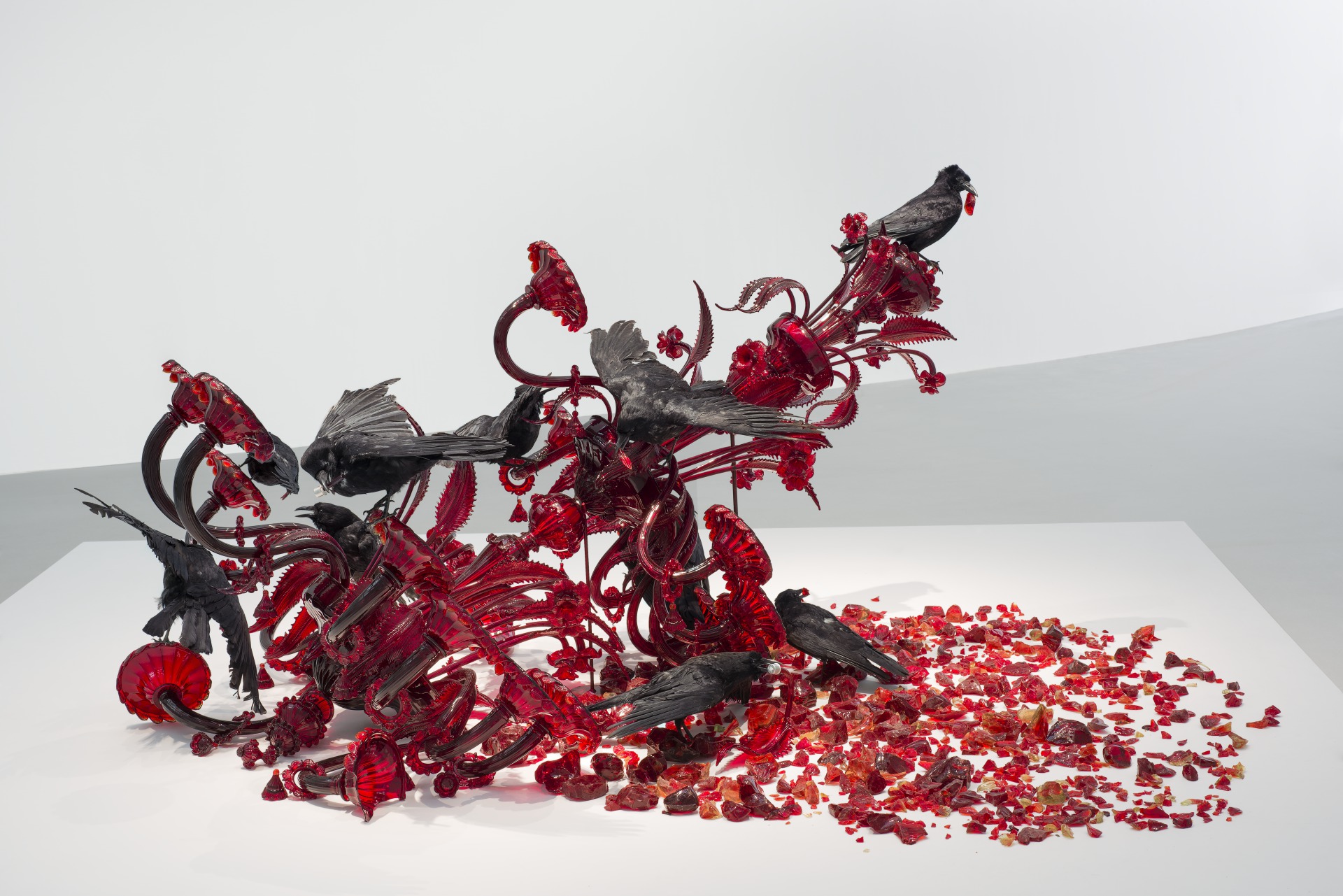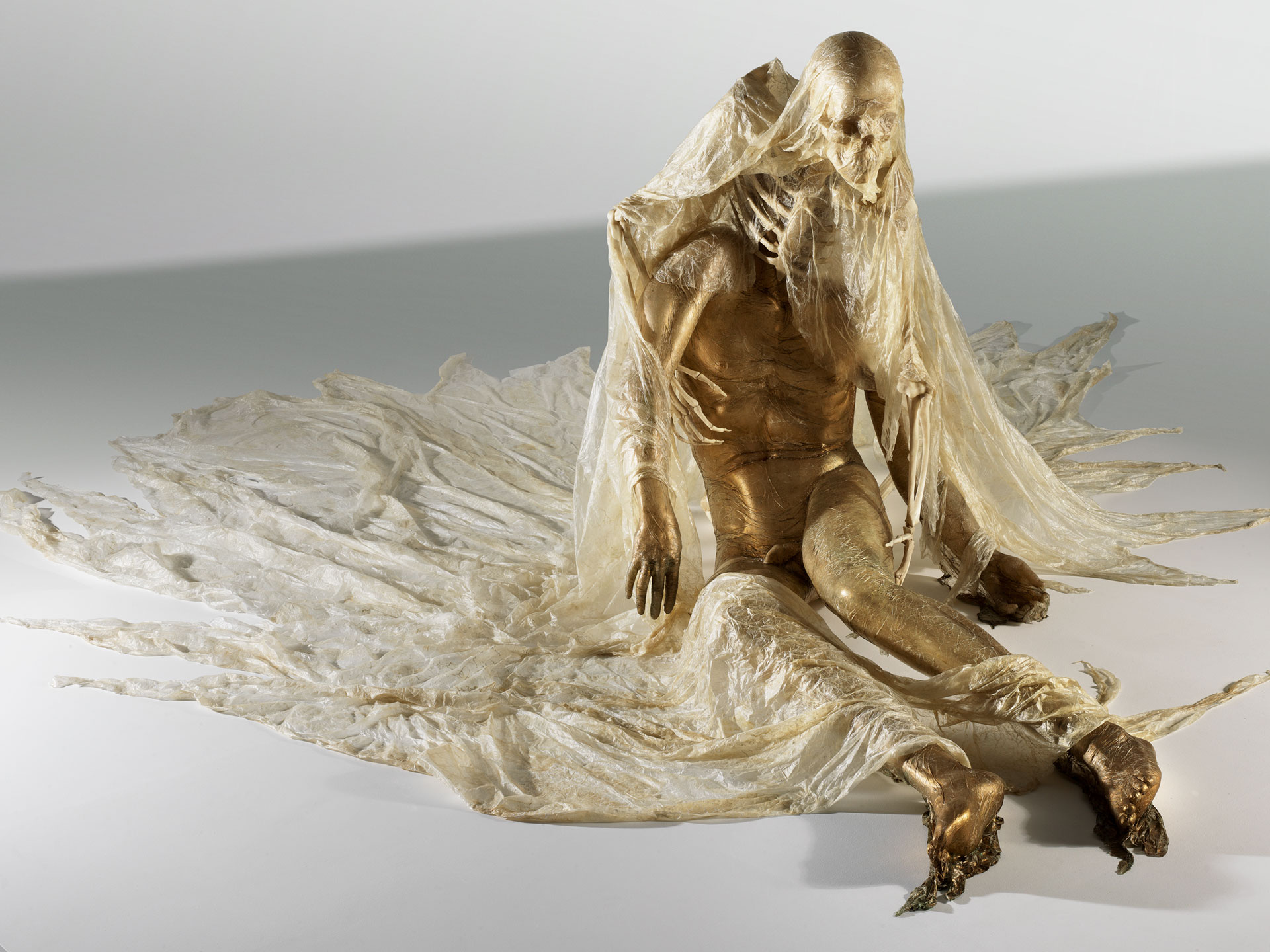Imagine carefully crafting an exquisite blown-glass chandelier...and then intentionally dropping it to the ground. Spanish glass artist Javier Pérez did just that with his provocative and disturbing piece entitled Carroña (Carrion). The broken, blood-red chandelier represents a carcass upon which taxidermic crows are hungrily perched, shards of glass dangling from their beaks, ready to devour it. A slew of scarlet and yellow glass pieces, suggesting splattered blood and plasma, trail away from the point of impact. It is unsettling and utterly dramatic.
Red and its symbolic implications have fascinated the Barcelona-based artist as do opposing themes of beauty and repulsiveness, spirituality and physicality, and creation and destruction (and the related motif of metamorphosis). In addition to working with glass, resins, bronze, latex, and porcelain, Pérez has incorporated unlikely materials such as horsehair, intestines, and silkworm cocoons in his installations that explore impermanence and the cyclical nature life.
Here, he uses Edgar Allan Poe-like imagery to symbolize the decline of the famed, centuries-old Venetian glassmaking industry. Relocated from Venice to the nearby island of Murano in 1291, the industry achieved its golden age in the 16th century. The development of English and Bohemian crystal in the following century led to a decline, and Napoleon’s shutting down of the glass factories in 1807 was a near demise for the revered glassmakers. Although revived several decades later, the Murano glassmaking industry is again in decline due to shrinking demand and competition from imitators.
Pérez created this striking piece on Murano in 2011.
- Martina Keogan
P.S. Glass made its way into modern art. See the incredible examples here!


 Javier Pérez
Javier Pérez